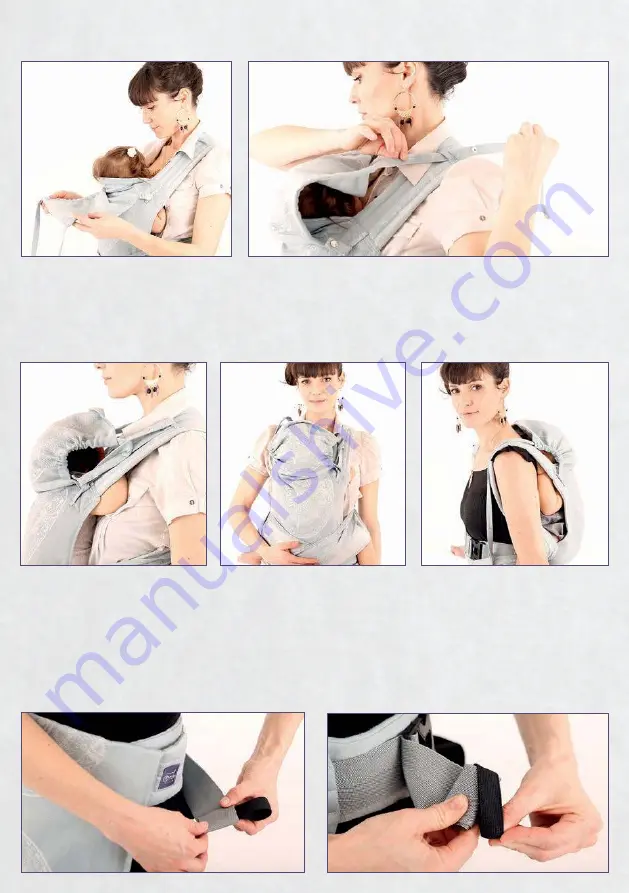
Using the hood
To attach the hood, feed the two
short poppered ties through the
loops on the body panel, just be-
low the shoulder straps and press
to fasten.
Bring the hood over the back of your child’s head; feed
each hood tie through the shoulder strap loops on each
side. Adjust to create the necessary support and fasten the
tie poppers as necessary.
You can ruche the hood by using the draw strings to gain support as needed. You can also attach
the hood on one side only to create the necessary support. Always ensure baby’s chin is off their
chest, their mouth and nose are not pressed against anything and there is a good airflow. The
hood can also be used on the back as well.
1
3
2
4
5
Excess webbing can be rolled away to keep it tidy, and the elastic loop used to secure it.
Webbing tidies















